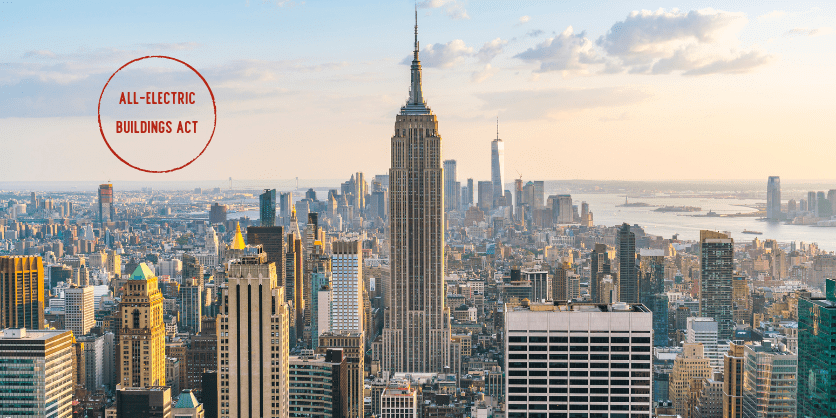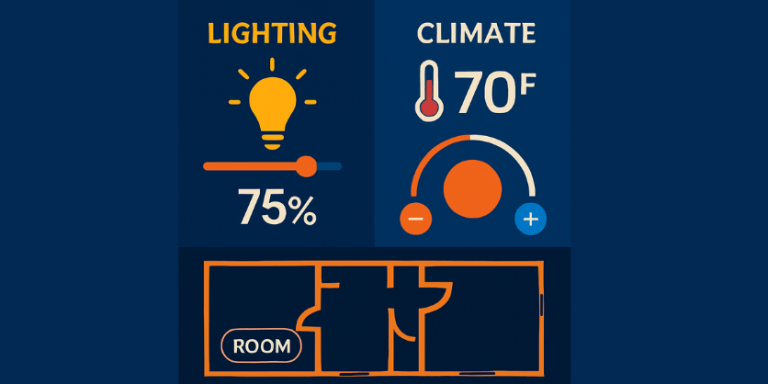New York State’s All-Electric Buildings Act Presents Opportunities

Shepherded by Assemblymember Emily Gallagher, Senator Liz Krueger, and lauded by New York City Public Advocate Jumaane Williams, the All-Electric Buildings Act was created to mitigate the negative impact of the global warming crisis. Proponents cite the statistic that buildings alone account for 32% of greenhouse gas emissions in New York as the catalyst. As of 2026, the All-Electric Buildings Act will require most newly constructed single-family and low-rise buildings in New York to use electric heat and appliances instead of operating on fossil fuels. By 2029, all remaining new construction must be fully electric. The New York Assembly stated that the law includes many “commonsense exemptions to help ensure a smooth roll-out.”
The news has been a long time coming. The initial passage of the All Electric Buildings Act was back in 2023. At a recent event to celebrate the implementation of the law, Assemblymember Emily Gallagher said, “I sponsored the All-Electric Buildings Act before it passed in the budget in 2023. Then, like now, I was incredibly proud of this legislation and its ability to keep utility costs stable and affordable for ratepayers, while creating 100,000 green new jobs and transitioning New York to a future that’s not dependent on fossil fuel. We know that all-electric buildings are healthier for residents, and electrification is the path to decarbonizing our state. [The] vote marks the next phase of this chapter, and it’s a huge milestone for New York, which is leading the nation by officially moving to implement this paradigm-shifting law.”
In a press release from electrification nonprofit Rewiring America, Senator Liz Krueger, Senate Finance Chair, commented, “The science is on our side. The economics of affordability for people with their utility bills are on our side. The job opportunities in a new, green economy that this move will generate will guarantee a whole new generation of people good-paying jobs. The [inclusion of the AEBA in the Building Code update] is one step, one really important step.”
Added New York State Senator Kristen Gonzalez, “With the All-Electric Buildings Act now fully integrated into our state’s building code, New York is turning bold climate promises into tangible progress. This is more than reducing emissions; it’s about lowering energy bills, improving indoor air quality, and creating the kind of green jobs our neighbors can rely on. Today, we are proving that sustainability and affordability go hand in hand.”
According to energy broker Integrity Energy, New York City is in fifth place in the ranking of the world’s smart cities. Smart water meters, smart waste compactors, and a smart traffic management system are among its standout programs. In particular, Integrity Energy highlights the Accelerated Conservation and Efficiency (ACE) Program of 2013 wherein New York City implemented LED lighting retrofits in more than 650 buildings owned by 16 city agencies. “This retrofitting project prevented 900 metric tons of greenhouse gas emissions, saving more than $800,000 each year,” Integrity Energy noted.
As the largest city in the U.S., New York City still holds plenty of opportunities over the next several years for lighting professionals specializing in lighting retrofits as well as smart lighting controls. The role of smart lighting and smart controls is especially critical at a time when municipalities are making a concentrated effort to reduce energy costs.
Lighting agents and manufacturers who can offer solutions to building and facilities managers to help reduce energy consumption and cost nationwide in cities considering similar legislation have a unique value proposition here.









